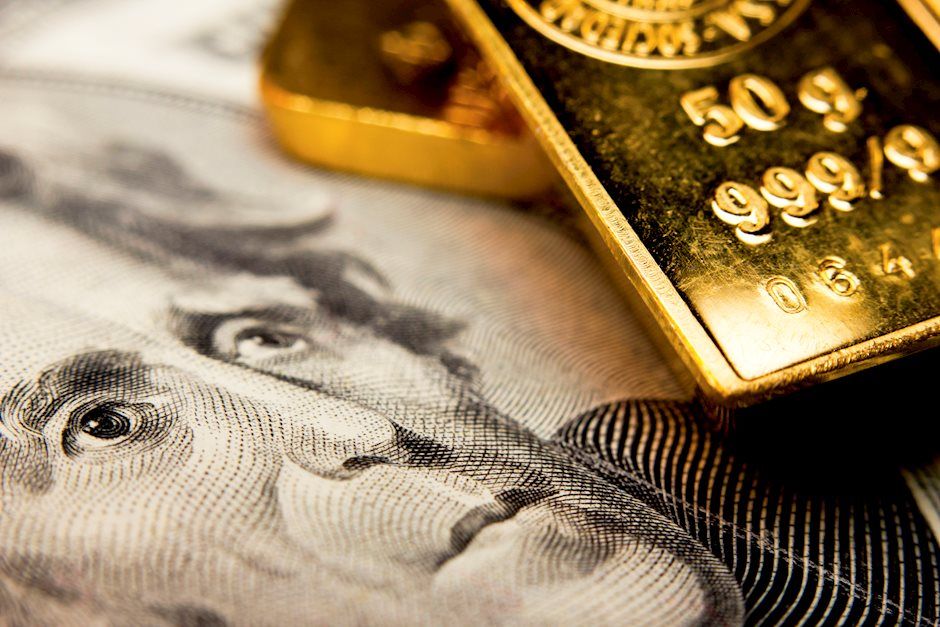Created
: 2024.11.27














![]() 2024.11.27 05:31
2024.11.27 05:31
Gold prices remain stuck at around $2,625 for the second straight day, even though US President Donald Trump threatened to impose tariffs on three of its major trading partners in a post on his social media platform. Usually, the golden metal should rise on geopolitical uncertainties, but a de-escalation in the Middle East conflict poured cold water on the precious metal.
The XAU/USD trades at $2,625, virtually unchanged. Meanwhile, the latest Federal Open Market Committee (FOMC) minutes were released. They hinted that the Federal Reserve could pause reducing rates and hold them at around restrictive levels if inflation remains elevated.
Trump's intentions to impose tariffs on Canada, Mexico, and China boosted the Greenback, ramping up fears of a global trade war.
Bullion's collapse on Monday was exacerbated by Israel and Hezbollah ceasefire optimism and pressured by the nomination of Scott Bessent as US Treasury Secretary for Trump's upcoming administration. This improved risk appetite, denting demand for Gold's safe-haven status.
Nevertheless, Gold's losses were capped if not by the escalation of the Ukraine-Russia conflict. This prevented XAU/USD from falling beneath $2,600 a troy ounce, even though the Greenback recovered some ground.
Data-wise, the US economic docket featured the release of the Conference Board (CB) Consumer Confidence in November, which exceeded estimates and October's number,
Ahead this week, the US economic docket will feature Durable Goods Orders, Initial Jobless Claims, and the Fed's preferred inflation gauge, the Personal Consumption Expenditures (PCE) Price Index.
Gold's price is neutral to downward biased after sellers pushed Bullion below the $2,700 mark. Additionally, XAU/USD is carving a series of successively lower highs and lower lows. If bears push prices below $2,600, it will open the door to testing the 100-day SMA of $2,565, immediately followed by the November 14 swing low of $2,536.
Conversely, if buyers recover the 50-day SMA at $2,665, this could pave the way to challenge $2,700. Once surpassed, the next stop would be $2,750, ahead of the all-time high at $2,790.
Oscillators like the Relative Strength Index (RSI) have shifted bearishly, indicating sellers are in charge.
Gold has played a key role in human's history as it has been widely used as a store of value and medium of exchange. Currently, apart from its shine and usage for jewelry, the precious metal is widely seen as a safe-haven asset, meaning that it is considered a good investment during turbulent times. Gold is also widely seen as a hedge against inflation and against depreciating currencies as it doesn't rely on any specific issuer or government.
Central banks are the biggest Gold holders. In their aim to support their currencies in turbulent times, central banks tend to diversify their reserves and buy Gold to improve the perceived strength of the economy and the currency. High Gold reserves can be a source of trust for a country's solvency. Central banks added 1,136 tonnes of Gold worth around $70 billion to their reserves in 2022, according to data from the World Gold Council. This is the highest yearly purchase since records began. Central banks from emerging economies such as China, India and Turkey are quickly increasing their Gold reserves.
Gold has an inverse correlation with the US Dollar and US Treasuries, which are both major reserve and safe-haven assets. When the Dollar depreciates, Gold tends to rise, enabling investors and central banks to diversify their assets in turbulent times. Gold is also inversely correlated with risk assets. A rally in the stock market tends to weaken Gold price, while sell-offs in riskier markets tend to favor the precious metal.
The price can move due to a wide range of factors. Geopolitical instability or fears of a deep recession can quickly make Gold price escalate due to its safe-haven status. As a yield-less asset, Gold tends to rise with lower interest rates, while higher cost of money usually weighs down on the yellow metal. Still, most moves depend on how the US Dollar (USD) behaves as the asset is priced in dollars (XAU/USD). A strong Dollar tends to keep the price of Gold controlled, whereas a weaker Dollar is likely to push Gold prices up.
![]()
Created
: 2024.11.27
![]()
Last updated
: 2024.11.27

FXStreet is a forex information website, delivering market analysis and news articles 24/7.
It features a number of articles contributed by well-known analysts, in addition to the ones by its editorial team.
Founded in 2000 by Francesc Riverola, a Spanish economist, it has grown to become a world-renowned information website.
We hope you find this article useful. Any comments or suggestions will be greatly appreciated.
We are also looking for writers with extensive experience in forex and crypto to join us.
please contact us at [email protected].
Disclaimer:
All information and content provided on this website is provided for informational purposes only and is not intended to solicit any investment. Although all efforts are made in order to ensure that the information is correct, no guarantee is provided for the accuracy of any content on this website. Any decision made shall be the responsibility of the investor and Myforex does not take any responsibility whatsoever regarding the use of any information provided herein.
The content provided on this website belongs to Myforex and, where stated, the relevant licensors. All rights are reserved by Myforex and the relevant licensors, and no content of this website, whether in full or in part, shall be copied or displayed elsewhere without the explicit written permission of the relevant copyright holder. If you wish to use any part of the content provided on this website, please ensure that you contact Myforex.
Myforex uses cookies to improve the convenience and functionality of this website. This website may include cookies not only by us but also by third parties (advertisers, log analysts, etc.) for the purpose of tracking the activities of users. Cookie policy